Hania is linked to Kithira by ferry (from Kissamos), which operates in the tourist season (weather permitting). First port of call after leaving Hania is Antikythira, a small inhabited island (population: 45) located between Kythera and Crete.
Kithira is a nature lover's paradise in spring when it is literally covered with wildflowers. It also holds a special place in my heart because of its extremely close ties with Australia, close to my own down-under origins. Most of the island's population (which peaked in the late 1800s to 14,500) migrated mainly to Australia, where there are now 35,000 Kithirians registered with the different Kithirian organisations, as opposed to the island's present population of around 3,500.
The rotary washing line is an unmistakable sign of down-under presence on the island. This washing line was brought to Kithira by a Greek-Australian (Kitherian in orgin of course), who may have entertained the idea of returning to the homeland (or at least maintaining a summer home there like many Greek-Australians). His/her descendants don't make the trip back 'home' as often as their parents probably wished to, hence the toppled line.
Kithira's cuisine resembles generic Greek cuisine; as with all small isolated regions in Greece (islands are classic examples of such places), it also has some regional culinary specialties of its own, some of which I got the chance to try while I was there. Then there is the bakery at the village of Karavas in the north of the island, which produces a very tasty olive-oil-based bread, called ladopsomo ('oil-bread') and paximadi (dry bread slices, rusks) that is distributed all over Greece via AB Vasilopoulos supermarket.
Watch how Kithirian paximadi is made at Karavas bakery, courtesy of Ilias Mamalakis' cooking show.
The second video (below) also includes a recipe (in Greek) that can be tried at home.
The second video (below) also includes a recipe (in Greek) that can be tried at home.
Left: My husband instantly recognised the vessel on the top of the shelves; it is a metallic container which was typically used to transport and store olive oil in Greece's recent past until plastic containers became more widespread due to cost. Right: The mat on top of the press, complete with lever (my husband's knowledge once again comes into play) was used in the pressing of olive mash, which was placed in between such mats, so that the oil could be procured.
Ladopsomo from Kithira needs very little to accompany it. The bread is made with a large quantity of olive oil, which you can see and feel as you eat the bread: the paper bag it was packaged in was covered in oil stains, and our slippery fingers glistened just as we touched the bread! The top of each loaf is sprinkled libearlly with salt, giving it a moreish taste. You don't even need a knife to cut the bread: before it was baked, it was decorated with knife carvings, so that when the time came to cut it and share it out, the slashes alone allowed it to yield even thick slices. And if you're a connoisseur, you'll realise that the slices looked very similar to the paximadi produced at the bakery!
Can you see the oil spots on the brown paper bag? We call them 'λαδιές' (lathies) in Greek. The bread readily yielded in slices - we ate it accompanied by some spring water by the river during a stopover on our walk. Thanks to Stella Yeung for taking a photo of my family.
Kithirian paximadi is white, unlike Cretan paximadi, which always contains wholemeal flour. Karavas bakery packs it in the former olive mill and distributes it all over Greece. They have also exported it in the past to Australia, where most Kithirians are now living, in this way helping to spread knowledge around the globe about Greek cuisine.
©All Rights Reserved/Organically cooked. No part of this blog may be reproduced and/or copied by any means without prior consent from Maria Verivaki.
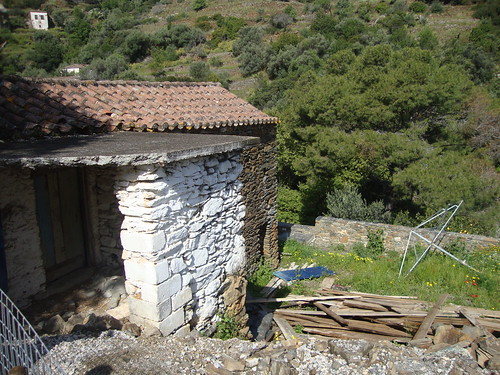
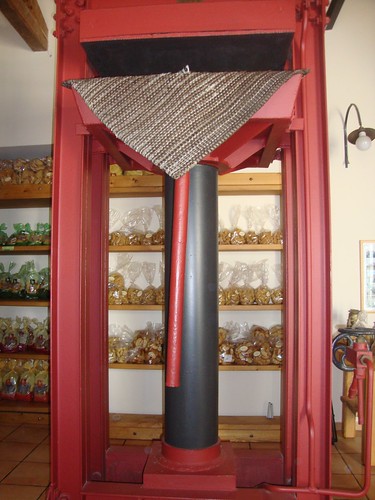
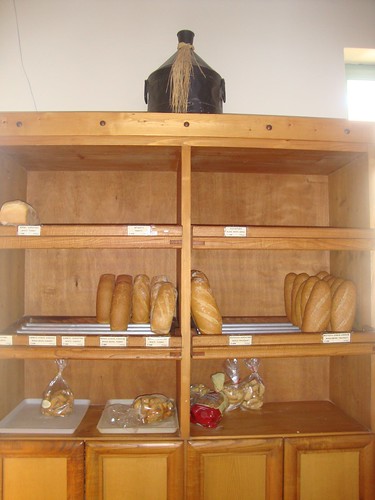
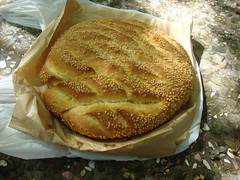
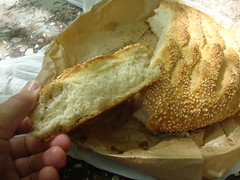
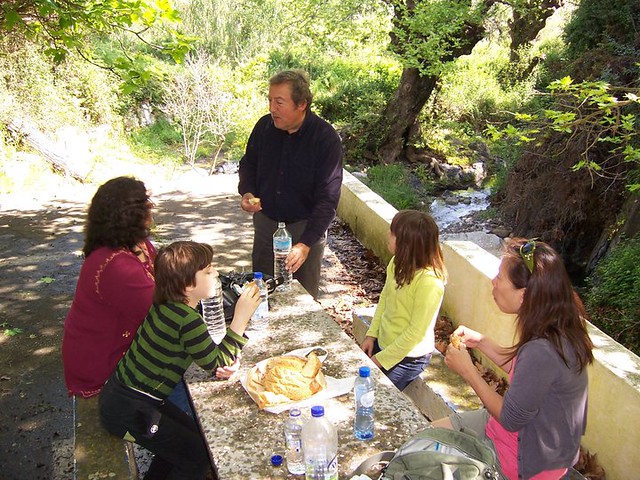
Looks like you had a wonderful vacation. A warm Spring day, sunshine, good bread and a walk in the countryside is all that is needed.
ReplyDeleteThis bread looks So good - fresh and full of good olive oil = Yumm
ReplyDeleteAnd so lovely to see a photo of the four of you together. enjoying good bread and a beautiful place.
Michelle down in Wellington (windy and wet yet strangely warm for mid-May), xxxxxxxx
One of my favourite breads Maria! Thank you for showing us its origins.
ReplyDelete